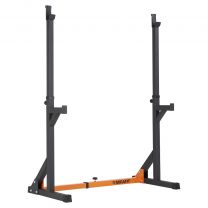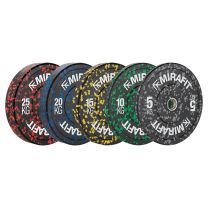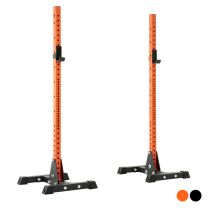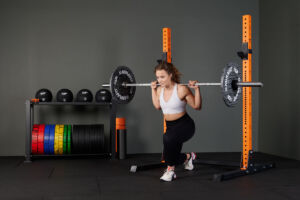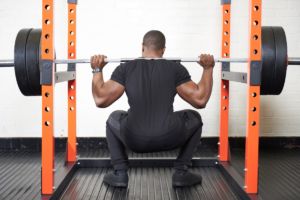Front Squat Benefits
Front Squat Benefits
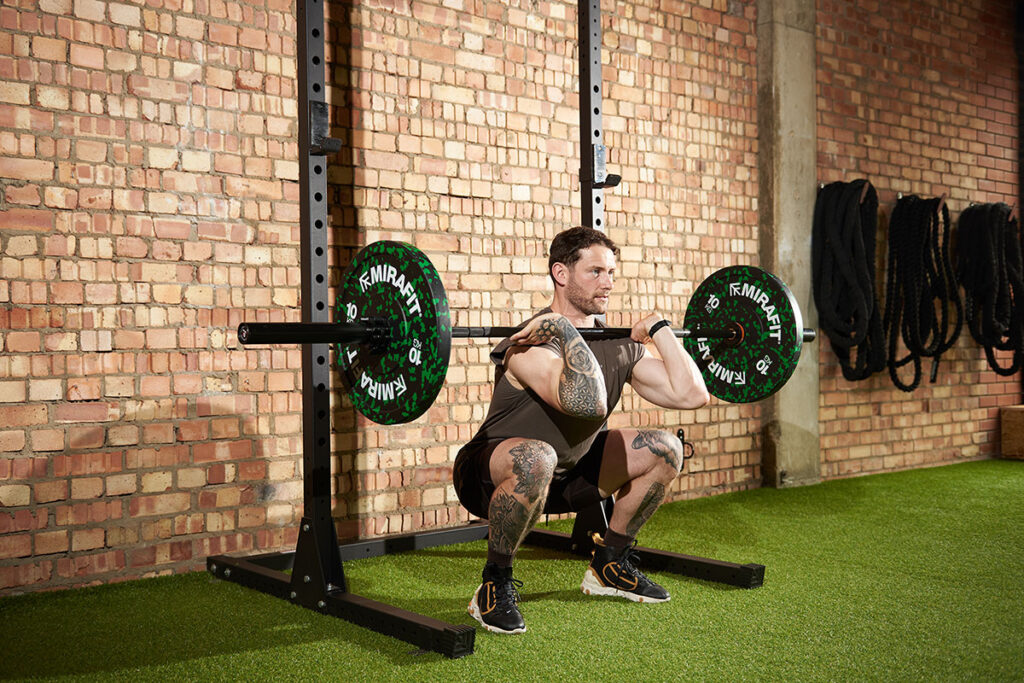
Squats are a functional exercise that are a part of almost everyone’s day to day movements. By practising good technique in the gym, not only can we build lower body strength, but we can improve our movement patterns throughout the day.
More often than not, people choose a back squat as part of their training routine. However, front squat benefits show why they are a vital movement..
How to Avoid Back Pain When Squatting

The first point to make is that although back pain when squatting is common, that doesn’t mean it’s right. If you have back pain when performing a squat then you are not executing the movement correctly. This could lead to an injury. There are some common reasons why you might be experiencing back pain when you squat -
• Neutral curve in the spine isn’t being maintained
• Lack of hip mobility causes you to load the lumbar spine
• Lack of thoracic mobility causes rounded shoulders
If you notice that any of these things occur when you are performing a squat, there are plenty of things you can do to correct them. Begin by removing the weight. Before you start piling the weight onto the bar, you need to ensure that you’ve got correct form.
Another way to avoid back pain when squatting is to try different variations. Although a barbell back squat is by far the most common method, there are other variations that might be better suited to your experience level and range of movement. Some of these include goblet squats, front squats and sumo squats.
How to Safely Perform a Front Squat
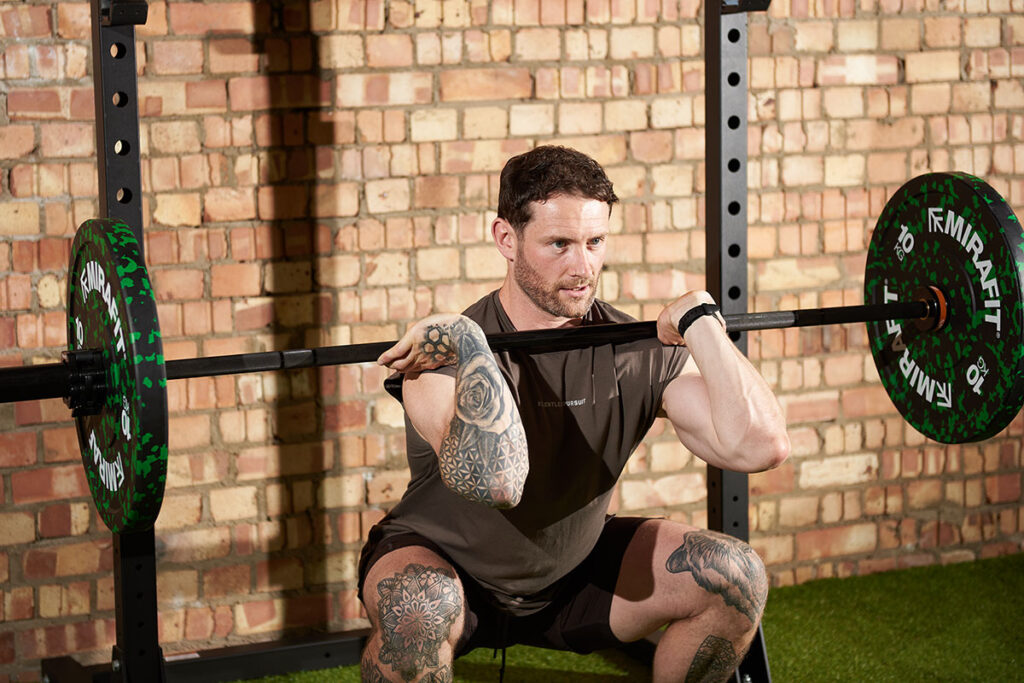
• Begin by placing the bar in the Squat Rack at armpit height.
• Walk towards the Bar and place the bar on the collar bones. Grip the bar from underneath and point the elbows forward, they should be in-line with your shoulders.
• Take a few steps back, brace your core and place your feet slightly wider than hip width apart.
• Screw your feet into the floor, bend the hips, knees and ankles and squat with the thighs below parallel.
• Keep the chest lifted and your spine neutral, then drive back up to a standing position.
Benefits of Front Squats vs Back Squats

Both the front and back squats are lower body exercises that target the quadriceps, as well as the hamstring and glutes. That being said, there are some differences that may benefit your training.
A front squat is a harder movement to perform than a back squat because it requires more mobility in the wrists, elbows, hips and ankles. The body is forced into a more upright position than when doing a back squat when a slight forward lean reduces some of the mobility needed in the hips, knees and ankles. As a result, you need to have more mobility. This can improve your day to day range of motion and mobility when performing other exercises.
Common Front Squat Mistakes and How to Spot Them
Although no one moves in the exact same way, there are some common mistakes to look out for when performing a front squat -
• Rounded upper back - ears and shoulder should be inline, with the shoulders externally rotated.
• Elbows not high enough - the elbows should be in-line with the shoulders.
• Excessive flexion or extension of the lower back - the spine should be neutral and the bum not excessively stuck out or tucked under the hips.
• Not getting low enough - your thighs should be at least parallel to the floor.
How to Improve Your Front Squat
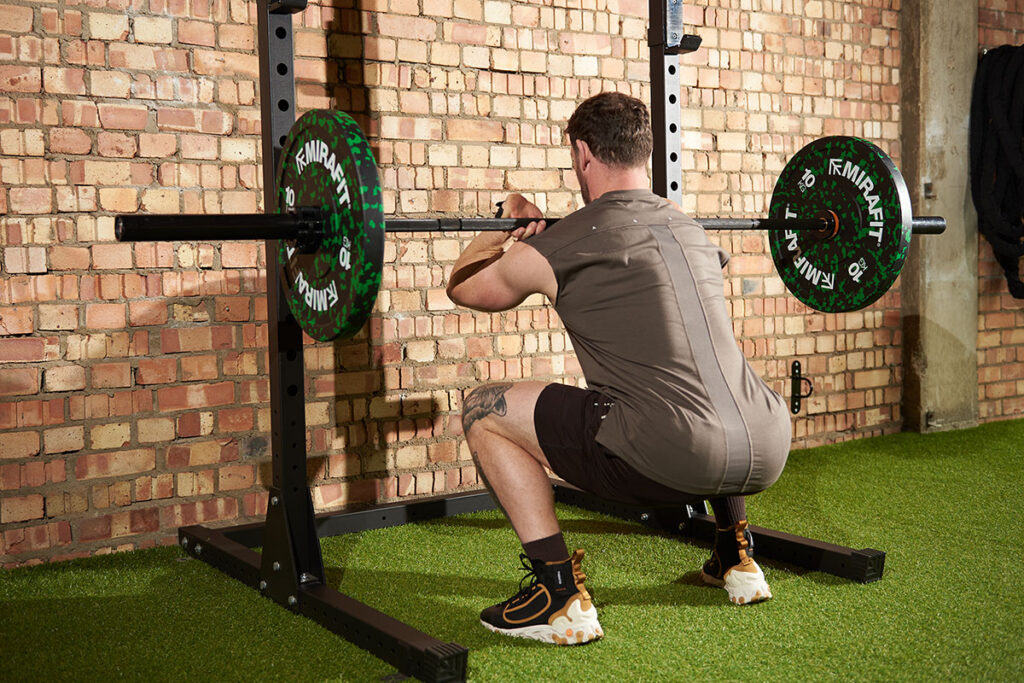
One of the best ways to improve your front squat is to keep practising. Make sure that you have a squat rack available to perform the exercise safely.
If your mobility is reduced in certain areas, completing mobility exercises can improve your squat. The key areas that you may have reduced mobility when front squatting are the wrists, elbows,upper back, hips and ankles. One of the best ways to increase range of motion in a particular exercise is by completing different variations of the movement. Examples such as these -
• Wall squats
• Box squats
• Gorilla squats
• Wrist and elbow flexion and extension
Accessory exercises can help address weaknesses and build strength in the muscles that are used during a front squat. Some of the best accessory exercises include -
• Weighted split squats
• Front rack step ups
• Leg extensions
• Leg press
There are several front squat benefits that will improve your athletic performance and day to day range of movement. It’s time to hit the squat rack and start practising.
You can read our complete guide to squat racks here
Written by guest author Eryn Barber.
For more content, follow us on Instagram, YouTube, TikTok, and on our official Mirafit Facebook page.
Enter your email to signup to our newsletter
Tags: Equipment > Bars & Weight Plates ; Equipment > Squat Racks ; Exercise Type > Strength ; Target Area > Waist

